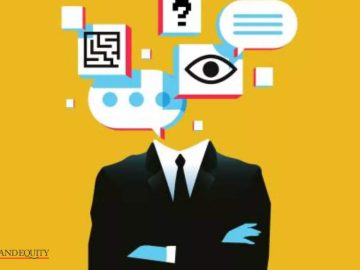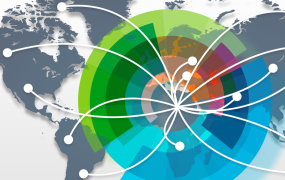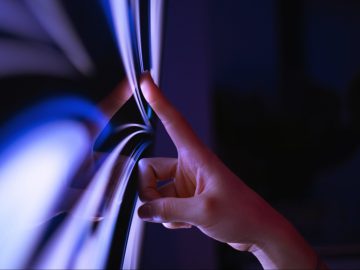In recent years, the digital art world has witnessed a fascinating evolution with the advent of AI-generated art. Among the various trends, one particular phenomenon has garnered significant attention: the rise of AI girls nude in modern digital art. This trend, while controversial to some, has become a major talking point in the art community. To explore this further, let’s delve into the factors driving the popularity of AI art, the role of social media in promoting it, and how AI art fits into the contemporary art scene.
Trends Driving the Popularity of AI Art
AI-generated art is not a new concept, but its mainstream popularity has surged dramatically in recent years. Several key trends have contributed to this rise, making AI art more accessible and appealing to a wider audience.
Accessibility and Democratization of Art Creation
One of the most significant factors driving the popularity of AI art is the increased accessibility of AI tools. Previously, creating digital art required a deep understanding of complex software and technical skills. However, with advancements in AI technology, almost anyone can now create art with just a few clicks. This democratization of art creation has opened the doors for a new wave of artists who may not have traditional artistic backgrounds but possess a creative vision that they can now easily bring to life.
The Allure of Hyper-Realism and Fantasy
AI-generated art often blurs the line between reality and fantasy, creating hyper-realistic images that captivate the viewer. The ability of AI to generate lifelike, yet entirely fantastical, representations allows artists to explore new dimensions of creativity. This is particularly evident in the depiction of AI-generated nude figures, where the boundaries of human anatomy and artistic expression are pushed to new limits.
The Influence of Digital Collectibles and NFTs
The rise of NFTs (Non-Fungible Tokens) has also played a crucial role in the popularity of AI art. Digital collectibles have become a lucrative market, with AI-generated art pieces often fetching high prices at auctions. This financial incentive has spurred more artists to experiment with AI tools, contributing to the proliferation of AI art across digital platforms.
Social media platforms have been instrumental in the rapid dissemination and popularity of AI-generated art. Artists and creators can now share their work with a global audience instantly, garnering attention and feedback that was previously impossible to achieve in such a short time.
Viral Art and the Power of Sharing
The viral nature of social media has allowed AI art to reach audiences far beyond traditional art circles. A single post showcasing an AI-generated piece can quickly gain traction, attracting thousands of likes, shares, and comments. This virality not only boosts the visibility of the artist but also introduces AI art to people who might not have encountered it otherwise.
The Role of Online Communities
Online communities, particularly on platforms like Reddit, Instagram, and Twitter, have become hotspots for AI art enthusiasts. These communities provide a space for artists to share their work, receive feedback, and collaborate with others. The supportive environment in these online spaces has fostered the growth of AI art, allowing it to evolve rapidly and reach new creative heights.
Influencers and Digital Art Curators
Social media influencers and digital art curators have also played a significant role in promoting AI-generated art. By featuring AI art in their content, they introduce it to a broader audience and lend credibility to the genre. This endorsement from popular figures helps to legitimize AI art in the eyes of both the public and the traditional art world.
How AI Art Fits into the Contemporary Art Scene
The integration of AI-generated art into the contemporary art scene has been met with both enthusiasm and skepticism. As AI art continues to gain traction, it raises important questions about creativity, originality, and the future of art.
Redefining Creativity and Originality
One of the most debated aspects of AI-generated art is the concept of creativity. Traditionalists argue that true creativity can only come from human experience and emotion, while proponents of AI art believe that machines can augment human creativity by offering new tools and perspectives. This debate has led to a reexamination of what it means to be creative in the digital age, challenging long-held notions about originality and authorship.
The Intersection of Technology and Art
AI art represents a significant intersection between technology and traditional artistic practices. This fusion has led to the emergence of new art forms that blend digital and physical elements, such as augmented reality installations and AI-generated sculptures. These innovations are pushing the boundaries of what art can be, offering new ways for audiences to engage with and experience art.
AI Art in Galleries and Museums
As AI-generated art becomes more prevalent, galleries and museums are beginning to take notice. Exhibitions featuring AI art are becoming more common, and some institutions are even dedicating entire shows to exploring the impact of AI on the art world. This acceptance by the traditional art world is a crucial step in establishing AI art as a legitimate and valuable part of contemporary culture.
The Future of Digital Art in the AI Era
The future of digital art in the AI era is full of possibilities. As technology continues to advance, so too will the capabilities of AI in creating art. This evolution will likely lead to even more sophisticated and innovative artworks, challenging our perceptions of creativity and the role of the artist.
The Potential for Collaborative Art
One exciting prospect is the potential for collaborative art between humans and AI. As AI tools become more intuitive and responsive, they could serve as creative partners, helping artists to explore new ideas and techniques. This collaboration could lead to the creation of artworks that neither human nor machine could produce alone, opening up new realms of artistic expression.
Ethical Considerations and the Role of AI in Society
As AI art becomes more widespread, it also raises important ethical questions. Issues such as intellectual property, the potential for AI to replace human artists, and the portrayal of sensitive subjects like nude figures need to be carefully considered. The art community will need to engage in ongoing discussions about the responsible use of AI in art, ensuring that its development benefits society as a whole.
Expanding the Definition of Art
Ultimately, the rise of AI-generated art is likely to expand our definition of what art can be. By challenging traditional boundaries and introducing new forms of expression, AI art is pushing the art world into uncharted territory. As we move further into the AI era, it will be fascinating to see how digital art continues to evolve and reshape our understanding of creativity.
In conclusion, the rise of AI girls nude and AI-generated art is a testament to the transformative power of technology in the art world. While it presents new challenges and questions, it also offers exciting opportunities for innovation and creative exploration. As AI continues to develop, its impact on digital art will undoubtedly be profound, shaping the future of artistic expression in ways we are only beginning to imagine.
![]()
This content is brought to you by the FingerLakes1.com Team. Support our mission by visiting www.patreon.com/fl1 or learn how you send us your local content here.





